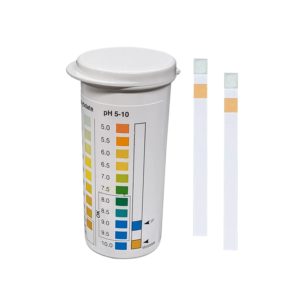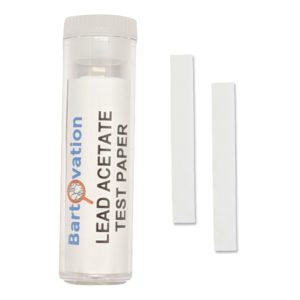Description
The Nitrite Nitrate test strip is used to test for Nitrites & Nitrates in solution simultaneously. The Nitrate pad detects Nitrate in solution at 10, 25, 50, 100, 250, & 500ppm. The Nitrite pad detects Nitrite in solution at 0, .5, 1, 5, 10, & 25ppm. Nitrite test strips are often used when testing for Nitrites in wine, seafood, and sandwich meats, such as ham and bologna. Nitrate test strips are often used to test fertilizer run-off in agricultural areas. This strip is very sensitive to light and moisture, so be sure to keep the vial tightly sealed. Make sure to reseal the bottle immediately after opening to prevent the moisture from ruining them.
The unit of measures are Nitrite and Nitrate. To express Nitrite as Nitrite-Nitrogen divide result by 3.3, for Nitrate as Nitrate-Nitrogen divide by 4.4 .
Instructions:
- Remove one Nitrite Nitrate test strip from the vial.
- Dip the test strip into the solution so that both pads are immersed and hold for 2-3 seconds in the solution.
- Remove the test strip, and shake off any excess liquid.
- Compare test pad to the color chart after 30 seconds
The pad on the end of the strip is for nitrate, the pad closest to your fingers when you dip it is for nitrite.

![Nitrite 0-25 ppm, Nitrate <span class="bldppm">0-500 ppm</span> Two Pad Test Strip [Vial of 50 Strips]](https://bartovation.com/wp-content/uploads/2020/03/nit-nat-main.png)
![Nitrite 0-25 ppm, Nitrate <span class="bldppm">0-500 ppm</span> Two Pad Test Strip [Vial of 50 Strips] - Image 2](https://bartovation.com/wp-content/uploads/2020/03/PWQ08V50-PHOTO-2.png)
![Nitrite 0-25 ppm, Nitrate <span class="bldppm">0-500 ppm</span> Two Pad Test Strip [Vial of 50 Strips] - Image 3](https://bartovation.com/wp-content/uploads/2020/03/label-1.png)



